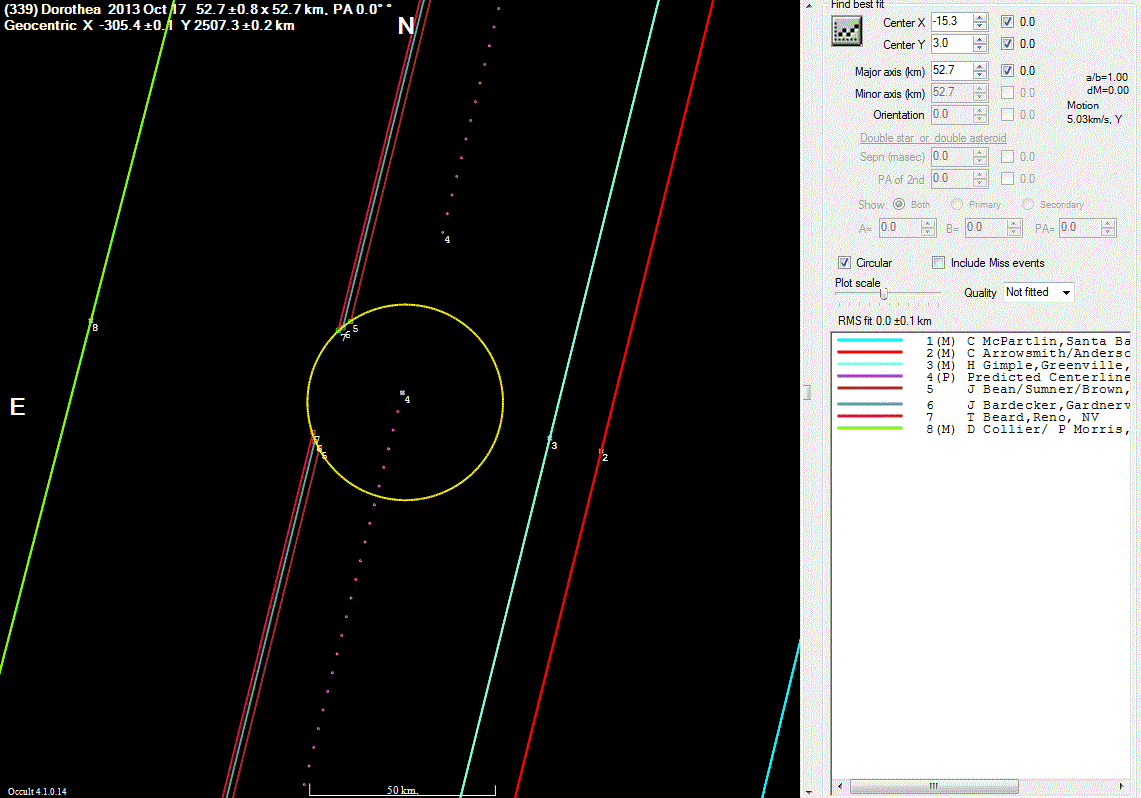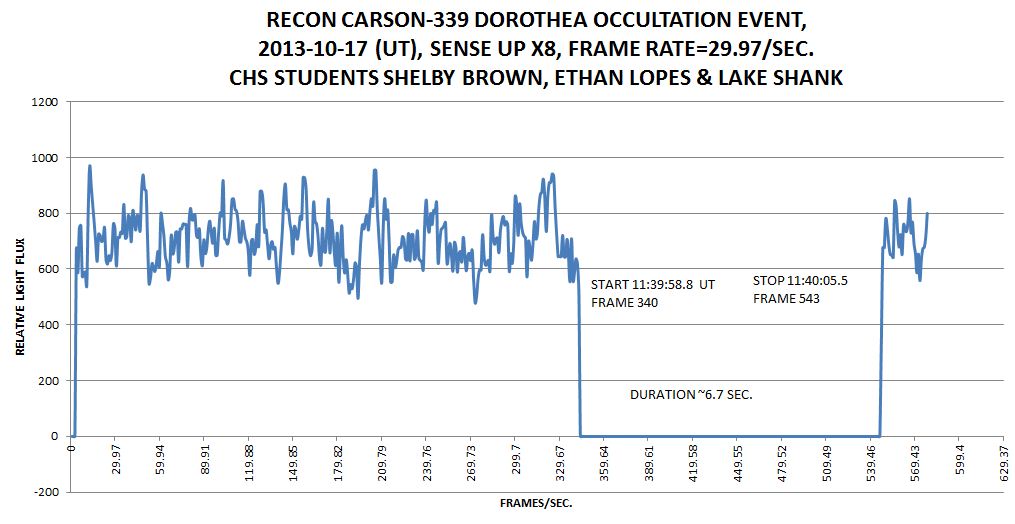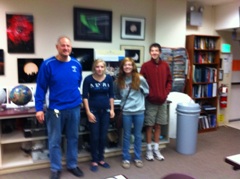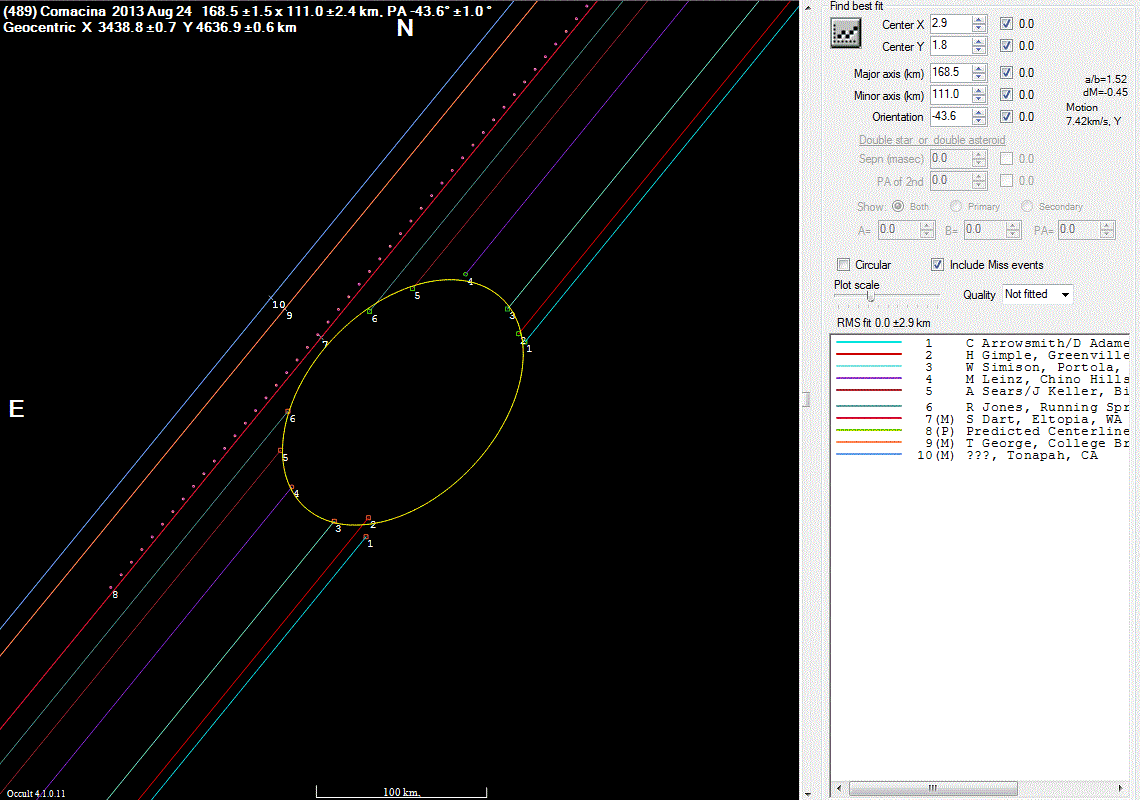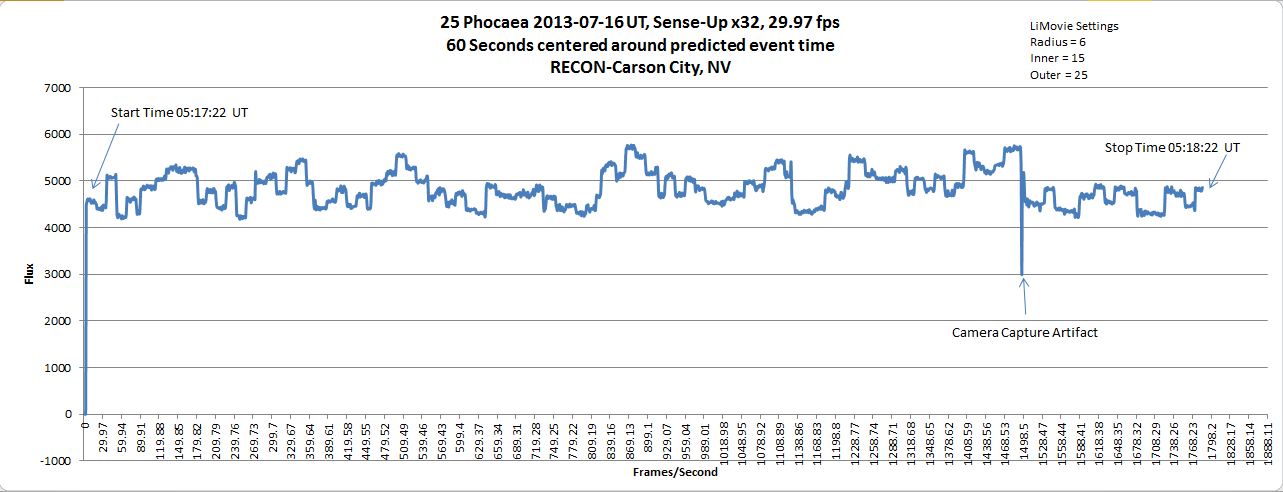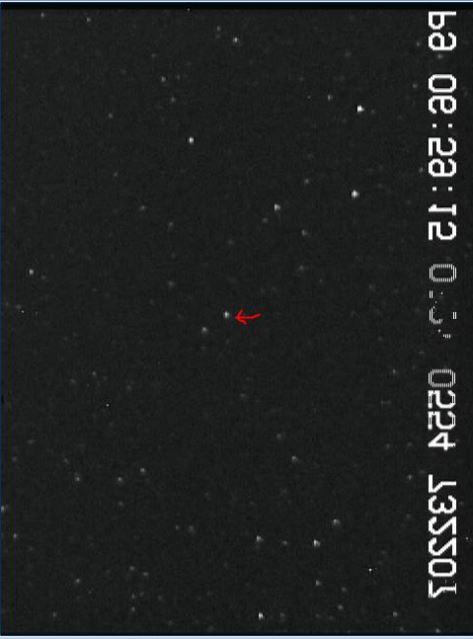Below is a chord diagram from observations collected on October 17 for (339) Dorothea by RECON team members in Gardnerville, Carson City, Reno, Quincy, and Greenville and other contributing IOTA members. Great job all!
Category Archives: Occultation Campaigns
Gearing Up for Iduna
Thanks to Jim Bean, Jerry Bardecker, Marc Buie, and the entire IOTA community who were able to contribute to the recent Patroclus campaign! We look forward to upcoming results from last Sunday’s observation of this binary Trojan asteroid.
Looking forward, the next official RECON observation will be (176) Iduna on Friday evening, November 8, just after 10PM Pacific Standard Time! 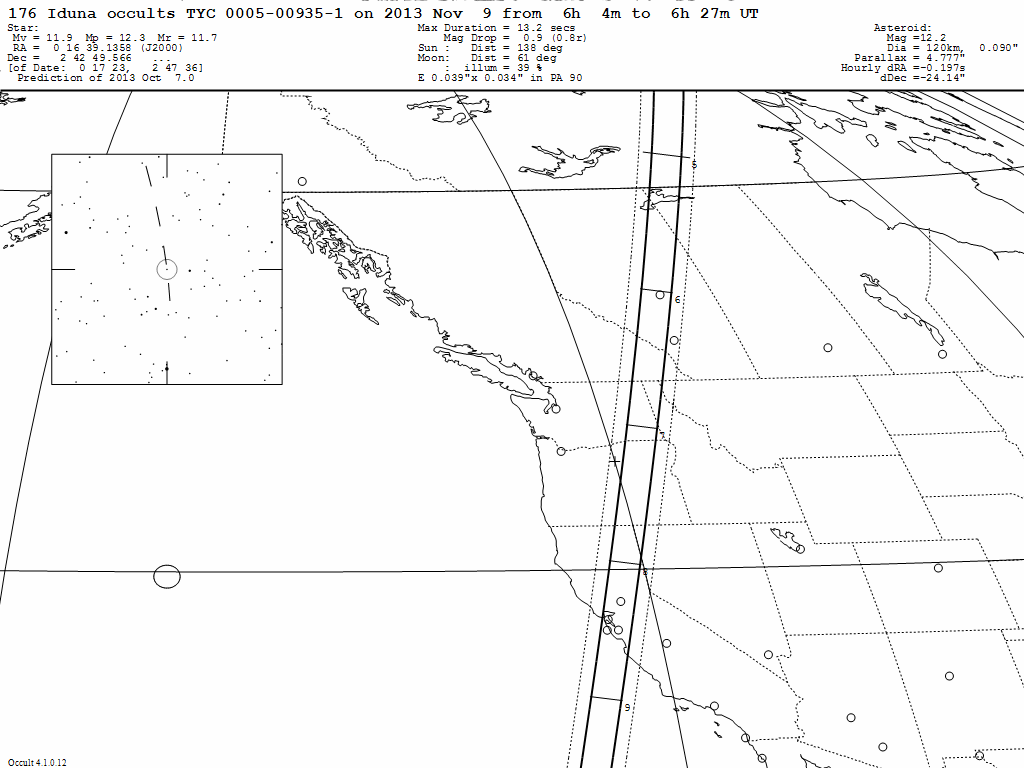
339 Dorothea Occultation Light Curve by Carson High Students
Comacina Results
On August 23, RECON sites from Northern California to Bishop successfully recorded an occultation by (489) Comacina. Participants in Tulelake, Fall River Mills, Susanville, Greenville, Quincy, Portola, and Bishop all measured the occultation event. The chord diagram below compiles RECON data and observations from other IOTA members to provide an estimate of the asteroid size and shape. For more asteroid occultation results from North America, visit http://www.asteroidoccultation.com/observations/Results/.
Unfortunately, heavy smoke from the Rim Fire burning in Yosemite Park obscured the skies for observers in Reno, Carson City, Gardnerville, Yerington, and Hawthorne. The image below shows a daytime shot from Carson City during this smoky time!
Comacina Event Friday Evening (8/23)
Looking forward to Comacina event this Friday evening, August 23, just after 11PM Pacific Time. The asteroid will be passing from north to south over most all our current RECON sites!
For more information on the event, visit the Observation Campaign page.
PI Marc Buie will be participating in the campaign from Tonopah, Nevada. Co-PI John Keller will be observing along with the team in Bishop, California.
Good luck to all. Feel free to reply to this blog post below!
25 Phocaea Light Curve, RECON-Carson
(1910) Mikhailov 2013-07-11
The above chart is oriented to match the view of the field through the CPC-1100 with diagonal
The above image matches the AAVSO chart above. The reason the numbers are mirrored is because the Carson City scope does not have a star diagonal. However, we wanted to present the image as “you” would observe it.
NOTE: Chart Rotation may be need to “match” your field
AAVSO charts
I found that the AAVSO charts that were posted for the Isolda event were a useful adjunct to the others provided from asteroidoccultation.com. Here are three similar charts for the upcoming Pluto event. If you want to make your own, visit http://www.aavso.org/vsp and set your own parameters. This is also an easy way to make charts that are reversed or in another orientation.
The 1-degree chart only goes to 14th magnitude so the target star is not shown, but the other two go to 15th magnitude.
— Charley Arrowsmith
Isolda lessons learned
For those of you that tried Isolda, thank you. Seems like most of us had one difficulty or another but it’s good to get that our of our collective systems early. I haven’t had a chance yet to review all of the files uploaded. I really have to get this automated more. Being on the road non-stop isn’t helping either. Last week I was in Flagstaff for a Planetary Defense Conference. Saturday I was at the bottom of Meteor Crater. Today I’m in Baltimore serving on an advisory committee for the Hubble Space Telescope.
I wanted to share some reflections on last week’s Isolda occultation event. First, I have to apologize for one of my mistakes here. I didn’t check on the Moon for this event. It was really close and pretty bright on event night. It gave me a lot of trouble with getting setup and finding the field. I was not really able to use anything on the star hop list fainter than Alhena. If it wasn’t for PreciseGoTo I would not have found the field at all. In the end, the moonlight caused me to take longer than anticipated to get on the field and I was very rushed for time to get the data recorder started.
Aside from the obvious reminder lessons floating around that night, I learned something really important about our cameras. The concept is a little tricky to explain but the bottom line is that if you use an exposure time (senseup) that is too short, you can fail to detect your object at all. That meant x12 was a really bad idea. Kudos to the Carson City folks in figuring this out and running with x48 instead.
Here’s the details in case you are wondering. I took a lot of data a couple of weeks ago getting ready for the Pluto event. Normally you can take an image with one set of camera parameters and then scale to what you’d expect to see at other settings. I do this all the time, even for working with the Hubble Space Telescope. In our case, this calculation doesn’t quite work right, as I found out. You see, today’s digital detectors are a lot more capable than cameras were at the time the video signal standard (NTSC in the US) was developed. Video is designed for a fairly limited range in brightness, far less than what a good camera can deliver. That means you have to do something in the electronics to match the camera signal to the video output. This is normally labeled “brightness” and “contrast”, same as you’d see on an old TV.
If you were designing the perfect system, there would be a control that would let you set the signal level for the background of your image. There’s always some background, either it’s from the sky brightness directly or it’s from the noise floor of your detector. Now, you can think of a video signal as having 256 levels of brightness — 0 would be black, 128 would be grey, 255 would be white and you have shades in between. I always prefer to see my background. That means I’d set the background to be a signal of 5 to 10, depending on how noisy it is. That means any source in the sky you can detect will be seen as a brighter bump on the background.
Our MallinCAMs have other ideas about how to set the background, unfortunately. Now, I have to say that there’s a chance I just haven’t figured out how to configure them to do what I want but with my current recommended settings this is a problem to watch out for. As I was saying, the MallinCAM doesn’t have a problem with black sky (signal=0). That’s what I had for the Isolda event. The problem with this is that you can’t tell the difference between a signal level of -100 and -1. It all comes out as 0. So, not only could I not see the sky but the star to be occulted was at a signal level below 0 and I only got a few of the brightest stars in my field.
How do we deal with this issue? I’m not entirely sure yet. I can say that x64 for the upcoming Pluto event is safe. I really need to characterize the camera better so I know how to better predict its output. This will be an ongoing effort in the coming months. All of you could help if you like and I’ve also got a couple of bright high school students that are going to work on tasks like this as soon as school lets out.
Oh yes, there’s one other thing that I’ve noted. The DVR screen makes your images look darker and less useful than they really are. I put an example of this on the Pluto event page. This makes it a little tricky to ensure that you are really seeing the sky level when you are in the field.

